Microsoft BUILD: Windows 8, A Pre-Beta Preview
by Brian Klug & Ryan Smith on September 13, 2011 12:05 PM EST- Posted in
- BUILD
- Windows
- Microsoft
- Windows 8
- Trade Shows
The Metro UI Continued
Next up is the control panel, which doesn’t entirely supplant Windows’ traditional control panel, but instead offers high level features in a Metro-friendly interface. The left side scrolls up and down and exposes categories, the right side serves as the interaction area for playing with all the toggles.
Interesting settings inside the control panel are things like privacy toggles for location services, which is akin to what we’ve seen on virtually every mobile platform, notifications through the push notification service which no doubt bears similarity to WP7, toggles for the onscreen keyboard (more on that later), and more. Under General are two new features - Refresh your PC, and Reset your PC.
The second is reasonably self explanatory, it resets the entire OS to its original shipping state using a built-in recovery partition part of the install. The first is a bit more interesting, as it restores Windows and configuration settings while leaving user-specific files like photos, music, and videos intact. Microsoft has noted that this option leverages the management tools used for imaging PCs in an enterprise environment, but now in a desktop setting.
There’s also a category marked ‘devices’ which is the settings pane for controlling peripherals like printers, human interface devices, and TVs. It doesn’t replace the device manager, but acts in practice as a high-level one for the devices that are used by the Metro/Start interface. At the very bottom is ‘more settings’ which literally takes you back to the old Windows 7 control panel.
This is the start menu, so just like in Windows 7 and Vista, you can simply start typing to get an immediate list of files and applications that match the string. Results are categorized into one of three bins - apps, settings, and files. Of course you can also just type the application name and hit enter like previous editions of Windows.
That really brings me to where the real windows desktop “lives” in Windows 8 right now, and there are a couple ways to invoke it. The first is that when a traditional desktop application is launched, either through a tile or search result, the Metro UI disappears and gives way to a Windows 7-esque desktop environment. The second is either by using the Windows Explorer or Desktop tiles, and the third is by good-ol Windows+D. Any of these get you to the desktop so to speak, which at this point looks almost exactly like Windows 7. There’s a good chance this isn’t finished yet and is going to change soon, but for now things look very familiar.
Down in the bottom left is the Start button, which gets a new look, and tapping or clicking here brings you back into the Metro start screen. It was at this point that things really occurred to me - the new start screen completely replaces the Windows 7 start menu in its entirety.
I’m reminded after seeing a lot of Windows 8 of two things. It’s almost like Windows Origami experience for UMPCs, but crossed with Windows Phone 7’s Metro design language and fluidity, all while retaining the desktop layer underneath. The question is whether Windows can successfully tailor itself to so many different form factors and retain the desktop power that users need and expect.
The last new UI elements we’ve been shown belong to the desktop part of the OS. These two features are the freshly included explorer ribbon and new queued copy dialogs.
The new Windows 8 explorer window includes two modes. In collapsed mode, the window is essentially the Windows 7 explorer pane, with the inclusion of an up a directory button and simplified bottom pane.
With the window expanded however, the ribbon appears. It’s starting to make sense that the ribbon really accommodates a touch-centric workflow, where right click is cumbersome or impossible. In its stead, controls in the ribbon are the one stop shop for file management.
There are also some contextual elements that pop up as well, for example when dealing with a .zip, compressed folder tools appears, and when photos are selected, picture management tools appear. For now the Ribbon isn’t mandatory, and the ability to collapse it up and retain valuable horizontal space should assuage the concerns of hopefully at least some of its critics.

The next major explorer change is the new and improved file copy dialog, which gives an optional detailed graph of copy throughput, and the ability to pause, resume, or stop file copy actions. We've only just started using this build and need more time to really play with larger file copies, but thus far the functionality does work and is welcome.


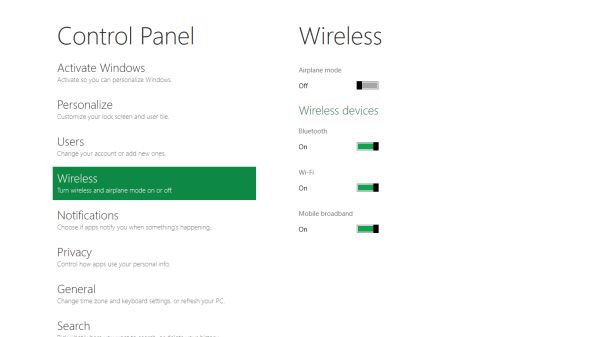
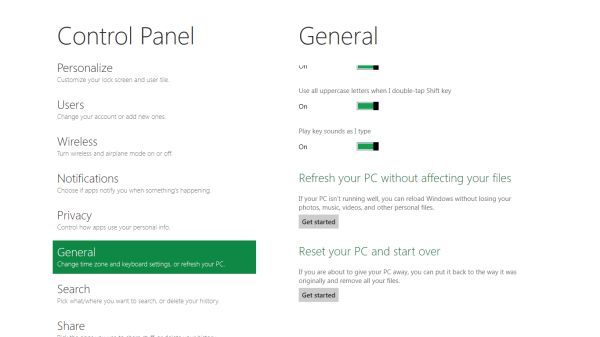
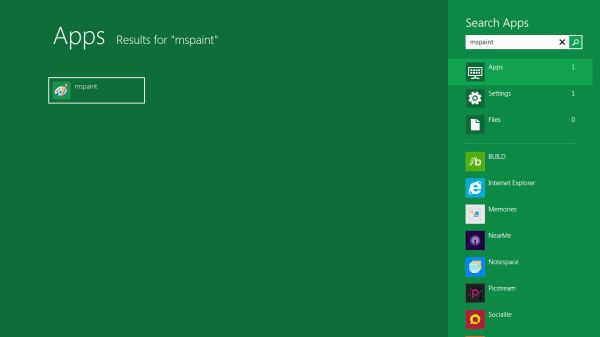
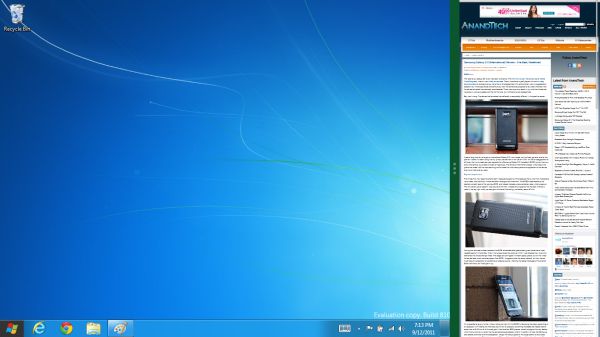
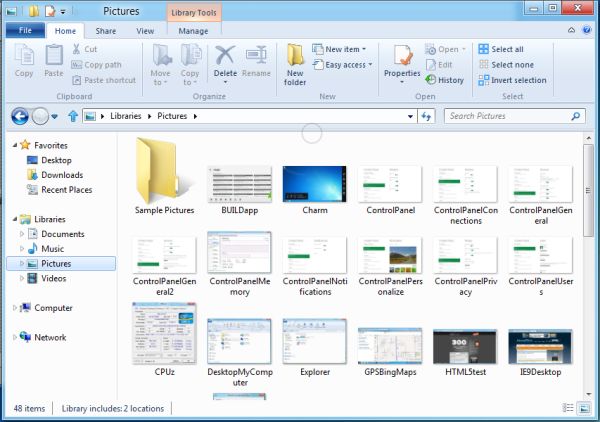
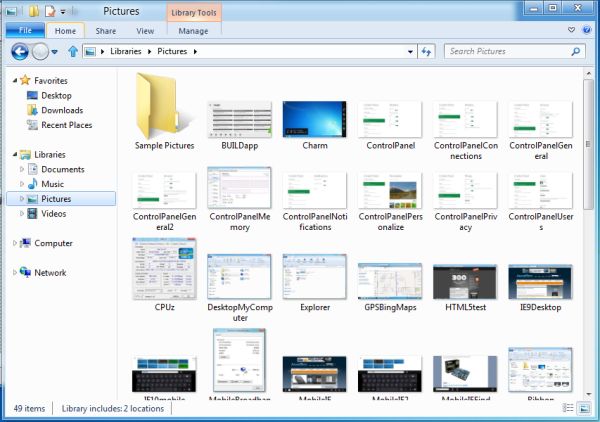









235 Comments
View All Comments
theangryintern - Thursday, September 15, 2011 - link
"It's proven itself in the phone form factor"Yeah, cuz WP7 phones are just flying off the shelves. /sarcasm (in case you couldn't tell)
Shadowmaster625 - Wednesday, September 14, 2011 - link
I like big buttons, I cannot lie. I have big icons I my desktop so as to facilitate remote usage.augiem - Wednesday, September 14, 2011 - link
Tell them what you think with your wallet. Pull a Vista on them. Do not buy Windows 8. Simple as that. Win 7 will be supported for probably 10 years. I for one am not going to screw productivity by installing this. When MS's revenues fall through the floor, they'll get the message.This is NOT the future of computing. As much as we'd all love to have Star Trek's computer where it just does everything for you, that's never going to happen.
jvillaro - Thursday, September 15, 2011 - link
You are as a consumer, in your right to just not buy it or use it. And MS is in their right to offer new things, change things up, take a risk and either fail or succeed.Garbage, idiotic, etc are your opinions... which many of us could think of you. That's the way it goes, maybe you could wait till it's released to make a real judgement.
Gimfred - Tuesday, September 13, 2011 - link
Why do the icons have to stay static? Like the look but think it will get in my way or my way will get in its way. If there are animated [informative] icons now, no reason they can't be improved on.
taltamir - Thursday, September 15, 2011 - link
You are confusing windows and linux.Windows has near 0 backwards compatibility. If you want to run an app or game that was made for windows 95, 98, or 2k you need to run it in linux under Wine because windows 7 will fail to run it.
@Metro: I hate it, its horrible. It looks neat on a tablet but how am I supposed to use it with a mouse and keyboard on my desktop or laptop?
mlambert890 - Thursday, September 15, 2011 - link
This post has to either be a joke or you are incredibly out of touch.Windows has 0 backwards compat? I run *DOS* apps in Windows 7. WTF are you talking about?
And if you didnt notice, Windows 7 has "XP compat" mode. A free instance of XP to run in a VM on a free desktop type 2 hypervisor.
Did you miss the compatibility tab and the "Run as ...." option that goes all the way back to W95?
Show me the app you can get to run in WINE that someone competent cant get to run under Windows. Maybe you ran into some outlier case, but thats like the guy who smokes 10 packs a day and lives until 90. Idiotic to try to pretend its the rule.
MSFT has suffered *mightily* for backwards compat unlike Apple and, yes, mighty Linux also. There are *plenty* of stranded apps that require recoding to work with newer libraries and newer kernel revs on Linux.
Wraith404 - Thursday, September 15, 2011 - link
How much time do you spend looking at your desktop? I do actual work, so I see mine about once a week. Live tiles are a gimmick derived from Android widgets, and are pretty much only useful on a fondleslab, and even then the usefulness is limited.damianrobertjones - Tuesday, September 13, 2011 - link
I'm used to using Windows Media Center so it won't be much of a change for me and as for that Fisher price thing.... People are BUYING ipads so you can see where everything is heading!fcx56 - Tuesday, September 13, 2011 - link
Exactly, I'm surprised no one has seen this coming. This interface began in 2005 with XP Media Centre Edition and with subsequent updates through Vista and 7, all they had to add were the tiles implemented in WP7 and here we are, a tablet interface to accompany ARM support.